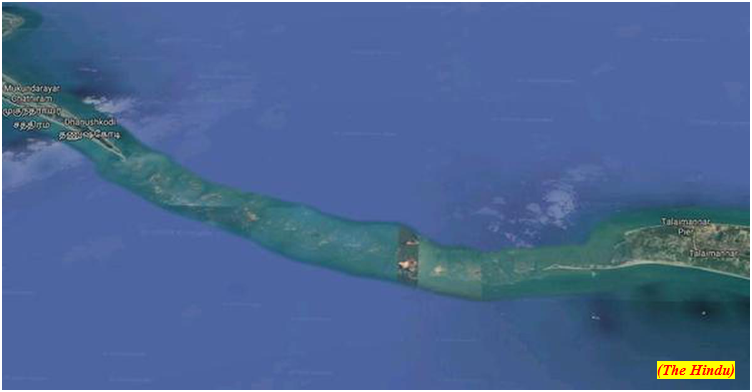Centre launches framework for safeguarding and protecting consumer interest from fake and deceptive reviews in e-commerce (GS Paper 3, Economy)

Why in news?
- Recently, the Department of Consumer Affairs launched the framework for safeguarding and protecting consumer interest from fake and deceptive reviews in e-commerce.
Details:
- The Department of Consumer Affairs, along with Bureau of Indian Standards (BIS) launched the framework titled, Indian Standard (IS) 19000:2022 ‘Online Consumer Reviews — Principles and Requirements for their Collection, Moderation and Publication’.
- The standards will be applicable to every online platform which publishes consumer reviews.
Guiding principles:
- The standard will initially be voluntary for compliance by all e-commerce platform. BIS will also develop a Conformity Assessment Scheme for the standard to assess compliance.
- The guiding principles of the standard are integrity, accuracy, privacy, security, transparency, accessibility and responsiveness.
Key Highlights:
- The standard prescribes specific responsibilities for the review author and the review administrator. For review author, these include confirming acceptance of terms and conditions, providing contact information and for review administrator, these include safeguarding personal information and training of staff.
- Once made mandatory, if required, the violation of the standards by any entity may be considered as an unfair trade practice or violation of consumer rights and a consumer may submit such grievances to the National Consumer Helpline, Consumer Commissions or the CCPA.
- The standard provides for responsibilities of organization including developing a code of practice, and necessary stipulations for terms and conditions like accessibility, criteria, and ensuring content does not contain financial information etc.
- The standard also provides for methods for verification of review author through email address, identification by telephone call or SMS, confirming registration by clicking on a link, using captcha system etc. to check traceability and genuineness of the review author.
Publication standards:
- With respect to moderation, the standard provides for both automated and manual moderation and provides checks for analyzing the review content.
- As regards to publication, the standard includes considerations for the review administrator at the time of publication process and after the publication process. The accuracy of the review, default display and weightage of ratings are defined in the publication process.
- The standard is expected to benefit all stakeholders in the e-commerce ecosystem i.e., consumers, e-commerce platforms, sellers etc. It will help usher in confidence among consumers to purchase goods online and help them take better purchase decisions.
Background:
- Over the last few years, there has been a steady rise in e-commerce transactions across the country.
- Reviews posted online play a significant role in making purchase decisions and consumers exceedingly rely on reviews posted on e-commerce platforms to see the opinion and experience of users who have already purchased the good or service.
- Taking cognizance of the impact of fake and deceptive reviews and protection of consumer interest in e-commerce, the Department of Consumer Affairs constituted a committee to develop framework on checking fake and deceptive reviews in e-commerce on 10th June, 2022.
- The committee included various stakeholders including e-commerce companies, industry associations, consumer organizations and law chairs.
https://pib.gov.in/PressReleasePage.aspx?PRID=1877733#:~:text=Taking%20cognizance%20of%20the%20impact,on%2010th%20June%2C%202022.
India takes over as Council Chair of Global Partnership on AI (GPAI)
(GS Paper 2, International Organisation)
Why in news?
- Recently, India assumed the Chair of the Global Partnership on Artificial Intelligence (GPAI), an international initiative to support responsible and human-centric development and use of Artificial Intelligence (AI).
- This comes close on the heels of India taking over the presidency of G20, a league of world’s largest economies at Bali, Indonesia.
.png)
National Data Governance Framework Policy (NDGFP):
- With National Programme on AI in place and a National Data Governance Framework Policy and one of world’s largest publicly accessible data sets programme in the works, India is committed to efficient use of AI for catalyzing innovation ecosystem.
- The NDGFP aims to ensure equitable access to non-personal data and focus on improving the institutional framework for government data sharing, promoting principles around privacy and security by design, and encouraging the use of anonymization tool.
- It also aims to standardise the government's data collection and management.
Economic aspect:
- The NDGFP along with the envisaged Indian Data Management Office IDMO shall catalyse the next Gen AI and Data-led research and startup ecosystem.
- The datasets programmes where anonymised non-personal data will be available for the entire AI ecosystem, also aims to boost the startup ecosystem.
- AI is expected to add USD $967 Bn to Indian economy by 2035 and USD 450–500 billion to India’s GDP by 2025, accounting for 10% of the country’s USD 5 trillion GDP target.
About Global Partnership on Artificial Intelligence (GPAI):
- GPAI is a congregation of 25 member countries, including the US, the UK, EU, Australia, Canada, France, Germany, Italy, Japan, Mexico, New Zealand, Republic of Korea, and Singapore.
- India had in 2020 joined the group as a founding member.
- It is a first-of-its-type initiative for evolving better understanding of challenges and opportunities around AI.
- It works in collaboration with partners and international organisations, leading experts from industry, civil society, governments, and academia to collaborate to promote responsible evolution of AI and guide the responsible development and use of AI, grounded in human rights, inclusion, diversity, innovation, and economic growth.
https://pib.gov.in/PressReleasePage.aspx?PRID=1877739
The geoheritage value of Ram Setu
(GS Paper 1, Culture)
Why in news?
- Recently, the Supreme Court gave the Centre four weeks’ time to file a response clarifying its stand on a plea by former Rajya Sabha MP Subramanian Swamy seeking national heritage status for the ‘Ram Setu’.

Sethusamudram Ship Channel Project (SSCP):
- While the story of the controversial Sethusamudram Ship Channel Project (SSCP) can be traced back to the British, who proposed creating a channel to link the Palk Strait with the Gulf of Mannar, it was only in 2005 that the project was inaugurated.
- Separating the shallow sea consisting of the Gulf of Mannar in the south and Palk Bay in the north is a somewhat linear coral ridge called Adam’s Bridge or Ram Setu.
- This runs between Rameswaram in Tamil Nadu and Thalaimannar in Sri Lanka.
- The SSCP, if completed, is expected to considerably reduce the navigation time between the east and west coasts of India.
Impacts of the project:
- Though the CSIR-National Environmental Engineering Research Institute ruled out any serious environmental risk and certified the feasibility of the project, concerns have been raised on the stability of the proposed channel and its environmental impact.
High energy waves:
- Computer models suggest that the central, eastern and north-eastern parts of the Palk Bay may be impacted by waves of higher energy.
- This means that these areas also receive more sediment, rendering them more turbid. The models also indicate that waves enter the Bay from its north and south, corresponding to how the channel is aligned.
Cyclonic storms:
- The area is also vulnerable to cyclonic storms. A cyclone in 1964 was so powerful that it wiped out the town of Dhanushkodi. Such storms can cause the local sedimentary dynamics to go haywire.
- Finding safe places for dumping dredged material without harming terrestrial or marine ecosystems is therefore a big challenge.
Emissions from ships:
- Emissions from ships traversing the narrow channel will pollute the air and water.
- And if a rogue ship carrying oil or coal is grounded or strays from its course within the canal, it could cause an ecological disaster.
Religious angle:
- The religious groups have been opposing it as they believe that the structure, which is mentioned in the Ramayana, is of religious significance.
Natural structure:
- In 2003, space-based investigations, using satellite remote sensing imagery, by researchers at the Space Applications Centre in Ahmedabad concluded that Ram Setu is not man-made, “but comprises 103 small patch reefs lying in a linear pattern with reef crest, sand cays and intermittent deep channels”.
- Cays, also known as keys, refer to low-elevation islands situated on surfaces made of coral reef. Thus, it is reasonable to assume that Ram Setu is a linear ridge made of coral reefs and forms a shallow part of the ocean that is being constantly impacted by sedimentation processes.
How Ram Setu evolved?
- Like the Great Barrier Reef, the Ram Setu is also a continuous stretch of limestone shoals that runs from Pamban Island near Rameswaram to the Mannar Island on the northern coast of Sri Lanka.
- During a global glaciation period that began around 2.6 million years ago and ended 11,700 years ago, the Indian coast, including parts of the Sethusamudram, may have been raised above water. The post-glaciation period witnessed a steady rise in sea levels around the world.
- The coral polyps could once again have grown higher on the newly submerged platforms. And in time, the platforms may have been used by migrants to cross oceans.
- The Ramayana refers to a putative land bridge in this region; believers hold it as the structure that Lord Rama and his army built to reach Lanka. This ridge may have been used in the distant past as a migratory route.
Ecological significance:
- The coral reef platforms between Thoothukudi and Rameswaram in the Gulf of Mannar were notified as a marine biosphere reserve in 1989.
- More than 36,000 species of flora and fauna reportedly live there, flanked by mangroves and sandy shores which are considered conducive for turtles to nest.
- This is also a breeding ground for fish, lobsters, shrimps and crabs. Of the 600 recorded varieties of fish in the region, 70 are said to be commercially important.
- This area is already threatened by discharge from thermal plants, brine run-off from salt pans, and illegal mining of corals. The SSCP, if it becomes a reality, will be the final blow to this sensitive environment and to the livelihoods of the people there.
‘Geoheritage’ perspective:
- While considering this issue from a believer’s point of view, it is also important to consider this feature from a ‘geoheritage’ perspective. The geoheritage paradigm is used in nature conservation to preserve the natural diversity of significant geological features.
- It accepts the fact that geodiversity, consisting of varied landforms and features representative of dynamical natural processes, is under threat from human activities and needs protection.
- The natural heritage of a country includes its geological heritage. The value of abiotic factors like geology, soils and landforms is also recognised for their roles in supporting habitats for biodiversity.
Way Forward:
- India’s ‘tryst with destiny’ does not begin at Harappa or the Vedic Period; it goes back billions of years when the Indian tectonic plate moved thousands of kilometres from the south of the equator to its present location.
- The Ram Setu carries the unique geological imprints of an eventful past. Therefore, it needs to be preserved not just as a national heritage monument, but also as a geoheritage structure as defined from a scientific perspective.



.png)
